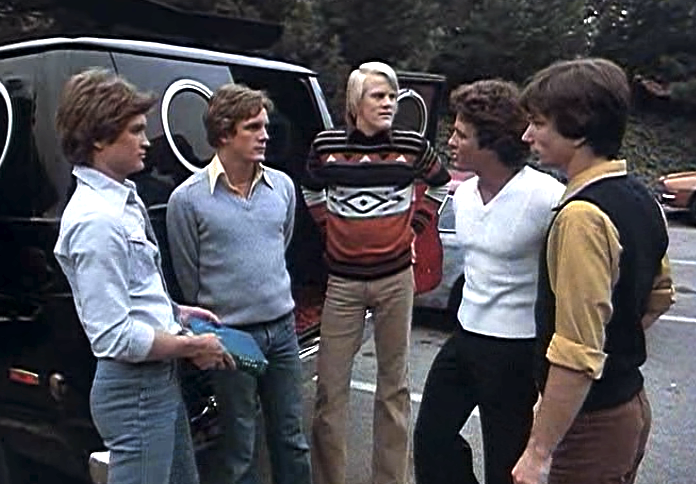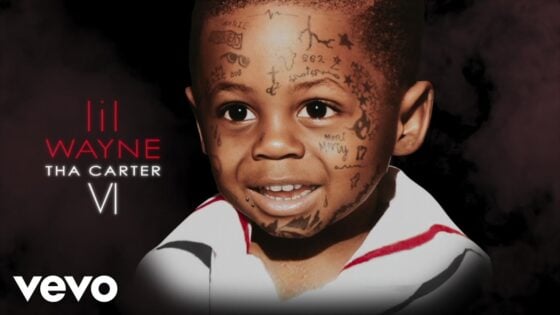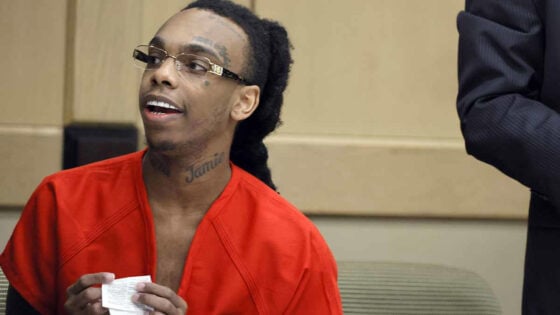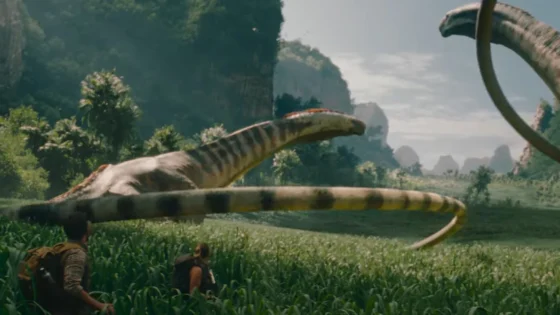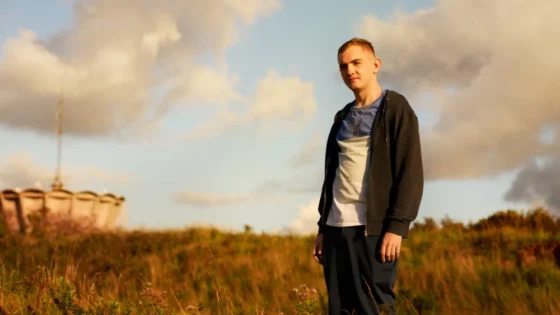The Definition of a Slasher Film
The definition of a slasher film varies depending on who you ask, but in general, it contains several specific traits that feed into the genre’s formula. Author Vera Dika rather strictly defines the sub-genre in her book Games of Terror by only including films made between 1978 and 1984. In other words, she saw it as a movement. When someone describes Brick, they don’t define it as a noir, but instead neo-noir. So does one consider Scream a slasher film or a neo-slasher, or simply put, a modern slasher?
Some consider Thirteen Women to be the earliest slasher – released all the way back in 1932. For my money, Michael Powell’s Peeping Tom (1960) is the mother of all slasher films. The film’s plot centres around a man who kills women while using a portable movie camera to record their dying expressions. It also happens to be a major influence on the found footage genre and one of the best films ever made. The film was immensely controversial; critics called it misogynistic, and thus the film was never theatrically released. When Alfred Hitchcock was informed that Powell’s film was banned, he decided to cancel all press screenings for Psycho, in fear that it too would be blackballed from having a theatrical release. It was a wise decision, and three months later Psycho hit the big screen, and the rest is what they call history. So is Psycho a slasher? Is Peeping Tom a slasher? In theory, yes. In Psycho, for example, there is a body count (even if only two), the film features a mystery killer, a knife-wielding maniac, a ‘stalking’ camera technique, and even a twist ending – but no one defined Psycho as a slasher film when it first was released, nor Peeping Tom.
What are the Best Slasher Films of the 70s and 80s?
Horror films in the 1970’s were largely influenced by the emergence in the previous decade of the psychological horror films, but if we were to include Psycho and Peeping Tom, then why not consider the dozens of other films that featured psychosexual killers from before their time, most notably Fritz Lang’s expressionist German masterpiece M (1931), a film featuring Peter Lorre has a creepy child murderer. If anything it simplifies my life to consider these as proto-slashers and so maybe one day I will write up a list of the films that were the biggest influence on slasher films made after 1970.
When Black Christmas and Texas Chainsaw Massacre were released, the term slasher wasn’t attributed to those films either. It was only around 1981 that “slasher” became initiated as a true sub-genre. So technically Vera Dika has a point. As with Film Noir, Giallo and any other sub-genre of film, it took a few filmmakers and a wave of similar movies to develop a terminology to distinguish them apart from other films. So while Psycho and Peeping Tom incorporated what later became the traditional slasher formula and were the biggest influence on future filmmakers, I am not including them on the list. Instead, I’ve decided to limit this list according to Dika’s terms – only stretching the time frame from 1970 – 1990. Anything prior to 1970 would be considered proto-slasher and everything after neo-slasher or simply modern slashers.
Before I get to the list, there is still one thing I have left to mention. Giallo films will also not be included. Like slasher films, Giallo was also a movement, and while they bear many similarities, Giallos actually have more in common with American noirs from the 40’s and 50’s – albeit with a pile of gore and gallons of blood. In fact, for Italian audiences, the term ‘Giallo’ is used to refer to any kind of thriller, regardless of where it was made. Thus American or British thrillers such as Hitchcock Psycho and Vertigo or Basil Dearden’s The Blue Lamp and Sapphire are, for Italian-speaking audiences, examples of Giallo.
Finally, many lists online include such films as The Hills Have Eyes, The Texas Chainsaw Massacre, The Hitcher and I Spit On Your Grave. I don’t consider these slasher films, but instead “backwoods horror” (Hills), action-thriller (Hitcher) and rape-revenge (Spit).
For now, I present to you the best slasher films made between 1970-1990 split between four pages. Enjoy!
The Best Slasher Films
39. The Silent Scream (1980)
The Silent Scream was actually made in 1977 but was only released in 1980, after the filmmakers revised the script and did several re-shoots. The film takes place in an old creepy mansion, (the sort that hides secrets in the basement) and stars Barbara Steele who makes a welcome return to the genre after a long absence. Rounding out the cast is fellow genre lead Cameron Mitchell. The Silent Scream isn’t a great film but it is capably made, and a solid effort, worth mentioning.
38. Tower of Evil / Beyond the Fog / Horror on Snape Island (1972)
You will notice most American movies on this list were released in 1981/1982. However, in the UK they were a decade ahead. The first of a few UK slasher films to appear on this list (all released in 1971/1972) is Tower Of Evil, also known as Beyond The Fog or Snape Island. Tower is an equal opportunity exploitation flick, one of which I remember mostly because it features many scenes of both women and men completely nude, albeit for no reason. The film is odd, vulgar, cluttered with devilish plot twists that never amount to a lick of sense and even features a ton of gore. There is even a supernatural element at play, only again, we are never sure why. Good, it is not, but fun it is.
37. Mil gritos tiene la noche / Pieces (1982)
Pieces comes from Spanish exploitation director Juan Piquer Simon, who also goes by the alias J.P. Simon and also Juan Piquer. Simon is known for his cheaply made ripoffs of American successes and Pieces is a prime example of this. Even the VHS cover claims the film is made by the producer of Friday the 13th– which is a total fabrication. Pieces is his most notorious film, a film so bad that some consider it good enough to recommend for laughs. This whodunnit set at a Boston college campus in where everyone is a suspect was actually shot in and around Spain and later dubbed in English dialogue which of course is laughable, though less so than the story and acting. There is a ton of red herrings, Giallo-inspired cinematography, and an effective opening in which a young boy hacks his mom to death with an axe after she punishes him for piecing together a jigsaw puzzle featuring an image of a naked woman. The boy then decapitates her and hides in the closet until the police arrive. One might assume that this opening scene explains the title of the film. Perhaps the movie will follow around a maniac who collects women’s body parts and pieces them together like a jigsaw puzzle. Nope. That would have been too clever. Instead, Pieces is a routine hack and slash gore-fest, overloaded with gratuitous and graphic violence, dodgy effects and awkwardly staged slasher set pieces. Once the killer is revealed, he pulls out a chainsaw in which we assume he was hiding in his coat and attacks his victim in an elevator. There is also a hilariously strange scene where Linda Day is attacked by her kung fu professor, who quickly passes out only to awaken and explain, “I am out jogging. Next thing I know, I am on the floor. Bad chop suey.” I’m not making this up. Pieces is best described as a provocative and sleazy parody of contemporary campus life. If Tommy Wiseau ever directed a slasher film, it would look something like this. Pieces also features the most ridiculous rapid-fire twists in all of slasher films – and an utterly brain-dead plot turn. It is, however, incredibly entertaining if you are sitting around with a group of friends during a horror movie marathon drinking some beer.
36. Fright / Night Legs (1972)
Fright is considered the first film to come up with the popular horror convention of a lone babysitter terrorized by a psychotic murderer and is pretty much a blueprint for When A Stranger Calls, Halloween, and countless other slasher films. This is a well-paced British suspenser that benefits from fine, strong performances, some bizarre dance/sex sequences, and great sound design. There is, of course, a fair number of plot elements that would become cliches of the slasher genre a decade later – but I’m pretty sure back then, it was still something relatively new. You have to wonder if Bob Clark or John Carpenter were inspired by these early 70’s British slashers?
35. Curtains (1983)
Curtains began started filming in 1980, but the production was plagued with problems and was shelved for over a year during which re-writes, re-shoots, and at least one re-casting was done. The film was finally completed and released in 1983, but almost nobody saw it when it came out. When the movie begins, it seems to borrow a bit from the plot of Samuel Fuller’s masterpiece Shock Corridor but then drastically takes a left turn and offers up an Agatha Christie type slasher film – and a Canadian one to boot. What sets Curtains apart from the dozens of slashers being produced during the heyday of the sub-genre is its smart screenplay, the use of one of the creepiest masks ever worn by a villain, and the talented cast which included popular Canadian horror leading ladies Samantha Eggar (The Brood) and Lynne Griffin (Black Christmas).
34. Massacre at Central High / Blackboard Massacre (1976)
This cheaply made exploitation film gathers interest because of its offbeat quality and the murderous solutions by the main characters – two qualities which classify it as a precursor to Heathers. What makes Massacre at Central High rise above most slasher films is its unusual level of political metaphor: an intriguing allegorical premise amongst a dreamlike and nightmarish, presentation, inspired by George Orwell’s Animal Farm. There are two other elements that set it apart from most entries in the genre: First, the killer actually starts out as the hero and then slowly becomes a threat to any student standing in his way, and secondly, the film is void of any adults. There are no teachers present, and the police are never called in to investigate the deaths.
33. The House on Sorority Row (1983)
This was Mark Rosman’s first feature after working as Brian De Palma’s assistant for years. The House on Sorority Row is stylish and well crafted, albeit formulaic, and remains a cut above the typical slasher. It also features one hell of a jump scare in the final scene. Trivia: The film found a loyal cult following years later when it was selected by Quentin Tarantino for the First Quentin Tarantino Film Fest in Austin, Texas, 1996.
32. Deadly Blessing (1981)
While I am not including The Last House On The Left and Hills Have Eyes on this list (since I consider them “backwoods horror”), Wes Craven does have one more film apart from A Nightmare On Elm Street that is mentioned here. Deadly Blessing is Craven’s fifth film and a supernatural-themed slasher that isn’t as bad as some claim it to be. Unlike Summer Of Fear, his made for TV disaster, Blessing is a curious discovery, set in the Amish community. The film still boasts a few of Craven’s best jump scares and a terrific score courtesy of James Horner. The film is beautifully photographed and features a terrifying sequence with Sharon Stone trapped in a barn by seemingly supernatural forces. The downside: Deadly Blessing also has a convoluted story that suffers from shoddy editing.
31. Slumber Party Massacre (1982)
Scripted by lesbian erotica novelist Rita Mae Brown and directed by Amy Holden Jones, Slumber Party Massacre was praised in some circles for its reputed feminist angle. Men are spineless and the women are sexually liberated, smart and usually in control of the chaos that ensues. The final confrontation culminates with symbolic imagery of castration and rape. Slumber Party Massacre also features one of the most underrated villains in any slasher film – the driller killer. Unfortunately, the sequels featured copycat killers, none of which could match the intensity of the original.








